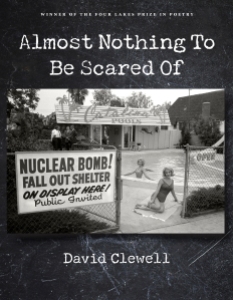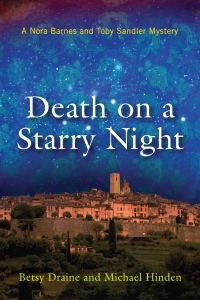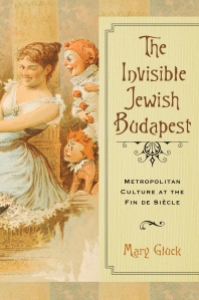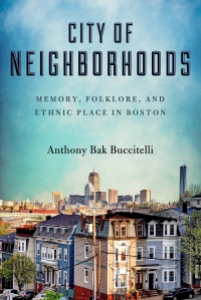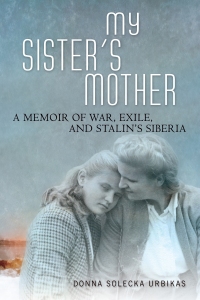Today the University of Wisconsin Press publishes Yooper Talk: Dialect as Identity in Michigan’s Upper Peninsula. Author Kathryn Remlinger explores features of this unique North American dialect while examining why dialects persist even in a globalized age.
The remote and isolated location of the Upper Peninsula of Michigan, combined with contact among English and other languages, have shaped Yooper talk over the past 150 years and have helped it remain distinct from other varieties of American English. It is shaped by tourism, economics, the sociolinguistic history of the Upper Peninsula, research on regional varieties, awareness about language variation, and how speakers claim identity with language.

Figure 1: Bjorklund-Ollila Strawberry Harvest at Heinola Finnish Immigrant Agricultural Community near Oskar Bay in Houghton County ca1920. Used by permission from Finlandia University’s Finnish American Historical Archives Collections
If there is a definitive Yooper dialect, why don’t all Yoopers sound the same?

Figure 2: Map of Michigan and Research Area, University of Wisconsin Press
Although there is a recognizable way of speaking American English in the Upper Peninsula, there is not just one standard UP dialect. There are many ways of speaking in the UP due to diverse factors including socioeconomic class, social relationships and activities, gender, age, first language, education, and occupation. Furthermore, many of the stereotypical features of “Yooper” are found throughout the Upper Midwest, including northern Wisconsin and Minnesota, and even in other parts of the United States and Canada, including Pennsylvania, Louisiana, Ohio, and southern Ontario. Residents, natives, tourists, and linguists have created the perception that there is one specific way of speaking in the Upper Peninsula. Typically this idea is based on a few limited linguistic features, but, if we listen to our neighbors, friends, and relatives who live in the UP, we’ll hear a cacophony of voices, each one claiming its place on the dialect map.

Figure 3: Welcome to Yooperland sign at Da Yoopers Tourist Trap, Ishpeming, photo by Kathryn Remlinger
But what about TV, radio, and other media? Aren’t they wiping out regional dialects?
Although we may learn new words and expressions from various media, media typically does not affect the ways we use language beyond temporarily adding to our vocabulary. Language variation and change can only happen through face-to-face interaction, while TV, radio, the Web, and other media lack that connection. However, regional dialects are far from static.

Figure 4: Say ya to da up, eh! bumper sticker, created by Jack Bowers, photo by Kathryn Remlinger
But why do these distinct varieties still exist with all the moving around that people do?
In part, distinctions exist because of the isolation and remoteness of certain areas. The Upper Peninsula is a good example of this, as its location limits the amount of contact speakers have with others. Thus we can hear certain features of the local dialect persisting, such as ya, da, eh, and the pronunciation of sauna as “sow-na.”
It’s not just geographic boundaries that influence local speech; cultural differences affect language variation, too. Our worldview is reflected in the language we use and how we use it. However, this claim comes with a cautionary note: language, particularly vocabulary, can reflect the beliefs and worldview of a group of people, and learning other languages is one way in which people develop different perspectives on the world. Yet, language does not determine our worldview, nor does culture determine the structure and use of our language. They are merely reflections of each other. For example, it’s commonly believed that people living in snowy regions have more words for snow than do speakers in tropical climates. While this might be true given the individual cultures and a community’s everyday practices, the number of words depends on how those words are put together and what counts as a “word.” Also, just because a language has no word for snow, this does not mean that its speakers can’t understand what snow is or create a word in their language for it.
Just because a language has no word for snow, this does not mean that its speakers can’t understand what snow is. Click To Tweet
Figure 5: Sauna insurance sign, photo by Kathryn Remlinger
Another factor that affects the longevity of dialects are the meanings and values we attach to them. For example, we often tend to think of someone who speaks with a regional accent as more honest, loyal, and kind. This positive perception is linked to the idea that the “best” speakers of a dialect are typically seen as the most “authentic” locals. Tied to this sense of authenticity is the most compelling reason for the maintenance of dialect differences: identity. Our language is one of the most obvious ways in which we mark who we are, where we’re from, and where we’ve been. This includes not only our region but also our social class, gender, age, ethnicity, education, and other ways in which we categorize ourselves culturally and socially. As the linguistic landscape shrinks through our online and geographic interconnectedness, language remains our badge of identity.
The most compelling reason for the maintenance of dialect differences is identity. Click To Tweetis a professor of English: Linguistics at Grand Valley State University in Allendale, Michigan.


 Kathryn A. Remlinger
Kathryn A. Remlinger





 “Gretchen, if you are a bus driver going from New York to Miami, you can’t head to Chicago without telling your riders why.” Then I’d know I had an organizational problem.
“Gretchen, if you are a bus driver going from New York to Miami, you can’t head to Chicago without telling your riders why.” Then I’d know I had an organizational problem. It was Bill who urged me to go looking for the grandfather I never knew—Franz Rickaby, who had died when he was only thirty-five. My grandmother had called him Frenzy. As a young English professor at the University of North Dakota, Franz wandered the Upper Midwest from 1919-1923. With a fiddle on his back, he sought the songs of the shanty boys from the camps of the quickly disappearing white pine forests.
It was Bill who urged me to go looking for the grandfather I never knew—Franz Rickaby, who had died when he was only thirty-five. My grandmother had called him Frenzy. As a young English professor at the University of North Dakota, Franz wandered the Upper Midwest from 1919-1923. With a fiddle on his back, he sought the songs of the shanty boys from the camps of the quickly disappearing white pine forests. I took Bill’s advice and hit the road. I traced Rickaby’s footsteps—as many as I could—and, in doing so, I met my grandfather. And I came to know a slice of American history from the lumber industry to the forest fires, from cutover land to the last remaining majestic white pines. I dove into the files of archives and historical societies from Galesburg, Illinois, to Ladysmith, Wisconsin, to Virginia, Minnesota, and points in between. When I called eminent folklorist Jim Leary, who knew Rickaby’s work well, a new edition of my grandfather’s work took shape. Pinery Boys was born.
I took Bill’s advice and hit the road. I traced Rickaby’s footsteps—as many as I could—and, in doing so, I met my grandfather. And I came to know a slice of American history from the lumber industry to the forest fires, from cutover land to the last remaining majestic white pines. I dove into the files of archives and historical societies from Galesburg, Illinois, to Ladysmith, Wisconsin, to Virginia, Minnesota, and points in between. When I called eminent folklorist Jim Leary, who knew Rickaby’s work well, a new edition of my grandfather’s work took shape. Pinery Boys was born.
 Franz Rickaby
Franz Rickaby Gretchen Dykstra
Gretchen Dykstra



















 The Norske Nook Book of Pies and Other Recipes, Jerry Bechard and Cindee Borton-Parker
The Norske Nook Book of Pies and Other Recipes, Jerry Bechard and Cindee Borton-Parker 071.3 Baughman, James L., Jennifer Ratner-Rosenhagen, and James P. Danky (Editors)
071.3 Baughman, James L., Jennifer Ratner-Rosenhagen, and James P. Danky (Editors) 305.893 Grady, Sandra Improvised Adolescence: Somali Bantu Teenage Refugees in America
305.893 Grady, Sandra Improvised Adolescence: Somali Bantu Teenage Refugees in America 305.896 Fleisher, Mark S. Living Black: Social Life in an African American Neighborhood
305.896 Fleisher, Mark S. Living Black: Social Life in an African American Neighborhood 327.730 Bartley, Russell H. and Sylvia Erickson Bartley Eclipse of the Assassins: The CIA, Imperial Politics, and the Slaying of Mexican Journalist Manuel Buendía
327.730 Bartley, Russell H. and Sylvia Erickson Bartley Eclipse of the Assassins: The CIA, Imperial Politics, and the Slaying of Mexican Journalist Manuel Buendía 641.860 Bechard, Jerry and Cindee Borton-Parker The Norske Nook Book of Pies and Other Recipes
641.860 Bechard, Jerry and Cindee Borton-Parker The Norske Nook Book of Pies and Other Recipes 759.13 Langer, Cassandra Romaine Brooks: A Life
759.13 Langer, Cassandra Romaine Brooks: A Life 797.122 Diebel, Lynne (Illustrated by Robert Diebel) Crossing the Driftless: A Canoe Trip through a Midwestern Landscape
797.122 Diebel, Lynne (Illustrated by Robert Diebel) Crossing the Driftless: A Canoe Trip through a Midwestern Landscape 813.54 Merlis, Mark JD: A Novel
813.54 Merlis, Mark JD: A Novel 813.6 DeVita, James A Winsome Murder
813.6 DeVita, James A Winsome Murder 813.6 Morales, Jennifer Meet Me Halfway: Milwaukee Stories
813.6 Morales, Jennifer Meet Me Halfway: Milwaukee Stories 882.01 Euripides (Verse translations by Francis Blessington, with introductions and notes) Trojan Women, Helen, Hecuba: Three Plays about Women and the Trojan War
882.01 Euripides (Verse translations by Francis Blessington, with introductions and notes) Trojan Women, Helen, Hecuba: Three Plays about Women and the Trojan War 959.004 Lee, Mai Na M. Dreams of the Hmong Kingdom: The Quest for Legitimation in French Indochina, 1850-1960
959.004 Lee, Mai Na M. Dreams of the Hmong Kingdom: The Quest for Legitimation in French Indochina, 1850-1960 967.610 Amony, Evelyn (Edited with an introduction by Erin Baines) I Am Evelyn Amony: Reclaiming My Life from the Lord’s Resistance Army
967.610 Amony, Evelyn (Edited with an introduction by Erin Baines) I Am Evelyn Amony: Reclaiming My Life from the Lord’s Resistance Army